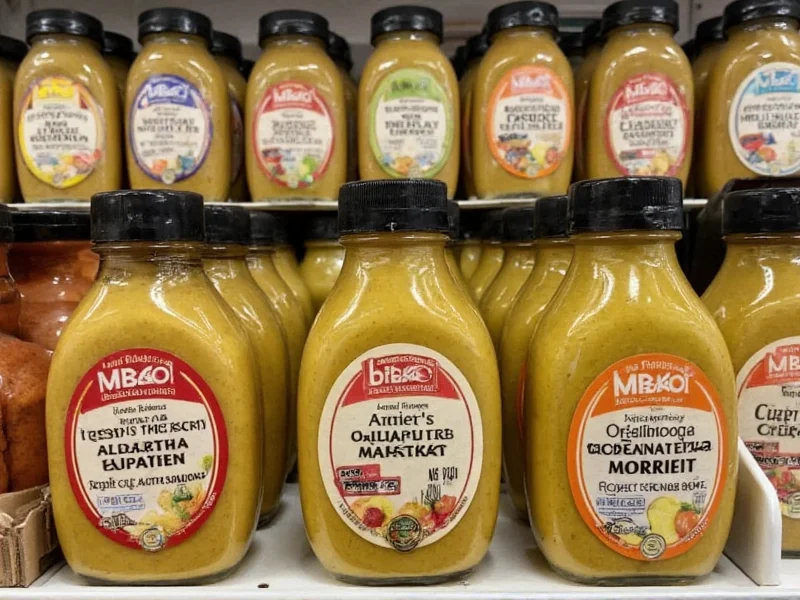Mustard's journey across continents reveals one of the world's most versatile condiments transformed by local ingredients and culinary traditions. From the vineyards of Burgundy to the spice markets of Sichuan, different types of mustard from various countries tell stories of cultural adaptation and gastronomic innovation. This comprehensive guide explores the authentic regional mustard varieties that have evolved across culinary traditions worldwide.
A Brief History of Global Mustard Traditions
Mustard seeds have been used since ancient times, with evidence of preparation dating back to Roman civilizations. The word "mustard" derives from mustum ardens (burning must), referring to the practice of mixing crushed seeds with unfermented grape juice. As trade routes expanded, mustard traveled across continents, adapting to local ingredients and palates. Understanding traditional mustard preparation methods worldwide requires examining how each culture incorporated this pungent condiment into their culinary identity.
European Mustard Varieties
Europe offers some of the most celebrated mustard varieties, each with Protected Designation of Origin (PDO) status in many cases.
| Variety | Country/Region | Key Ingredients | Flavor Profile |
|---|---|---|---|
| Dijon | France (Burgundy) | Black/brown mustard seeds, verjuice, white wine | Sharp, tangy, complex with wine notes |
| Meerrettich | Germany (Bavaria) | Horseradish, mustard seeds, vinegar, sugar | Creamy, sweet with horseradish kick |
| English Whole Grain | United Kingdom | Yellow mustard seeds, malt vinegar, spices | Rustic, tangy with visible seeds |
| Mostarda di Frutta | Italy (Lombardy) | Fruit, mustard oil, sugar syrup | Sweet, spicy, complex fruit-forward |
French Dijon mustard, despite its name, rarely contains verjuice today but maintains its distinctive sharpness through white wine and precise milling techniques. German sweet mustard ( süßer Senf) balances vinegar's acidity with substantial sugar content, creating a condiment perfect for pairing with sausages and pretzels. The United Kingdom's contribution includes both smooth brown mustard and the coarser whole grain variety, traditionally served with roast beef. Italy's mostarda represents a unique category—fruit preserved in a mustard syrup that delivers surprising heat beneath its sweet exterior.
Asian Mustard Traditions
Asian mustard varieties often feature more intense heat and distinctive preparation methods compared to their European counterparts.
Chinese hot mustard creates its signature burn through enzymatic reaction—when brown mustard seeds mix with water, the enzyme myrosinase activates sinigrin, producing intense heat that dissipates after 10-15 minutes. This explains why authentic Chinese hot mustard is always prepared fresh in restaurants. Japanese karashi, made from brown mustard seeds without vinegar, delivers a clean, sharp heat that complements dishes like tonkatsu and oden. Korean mustard often incorporates gochugaru (red pepper flakes) for additional complexity, while Indian mustard oil—used extensively in Bengali and Punjabi cooking—undergoes a heating process that reduces its natural bitterness.
American and Canadian Mustard Variations
The North American continent showcases remarkable regional diversity in mustard production.
American yellow mustard, the ubiquitous ballpark condiment, gets its vibrant color from turmeric and mild flavor from vinegar preservation of yellow mustard seeds. Specialty varieties like New Orleans-style mustard incorporate Creole spices, while Pacific Northwest craft producers experiment with local ingredients like hazelnuts and berries. Canada's contribution includes British Columbia's honey mustard and Quebec's maple-infused varieties that reflect local agricultural products. Comparing mustard varieties from different cultures reveals how immigrant communities adapted Old World recipes using New World ingredients.
Exploring African and Middle Eastern Mustard Heritage
Less documented but equally fascinating, African and Middle Eastern mustard traditions offer unique perspectives.
Ethiopia's senafitch combines ground mustard seeds with berbere spice blend and niter kibbeh (spiced clarified butter), creating a complex base for stews. In the Middle East, particularly in Lebanon and Syria, mustard appears in za'atar variations and as a component in pickling mixtures. These culinary uses of international mustards demonstrate mustard's versatility beyond the condiment role it plays in Western cuisine.
Practical Guide to Using Global Mustards
Understanding where to buy authentic international mustards helps enthusiasts explore these flavors at home. Specialty food stores, ethnic markets, and reputable online retailers offer genuine products. When selecting mustards:
- Check ingredient lists for authenticity—traditional Dijon shouldn't contain yellow mustard seeds
- Consider heat levels when substituting—Chinese hot mustard's enzymatic heat differs from vinegar-preserved European varieties
- Store stone-ground mustards in the refrigerator to preserve flavor complexity
- Use German sweet mustard as a base for potato salad dressings
- Pair Japanese karashi with fatty fish to cut through richness
Chefs seeking to incorporate authentic regional mustard varieties into their cooking should consider each type's unique chemical properties. Vinegar-based mustards provide consistent acidity, while water-based preparations like Chinese hot mustard offer temporary heat peaks ideal for specific culinary applications. This knowledge of flavor profiles of global mustard types transforms ordinary dishes into authentic culinary experiences.











 浙公网安备
33010002000092号
浙公网安备
33010002000092号 浙B2-20120091-4
浙B2-20120091-4